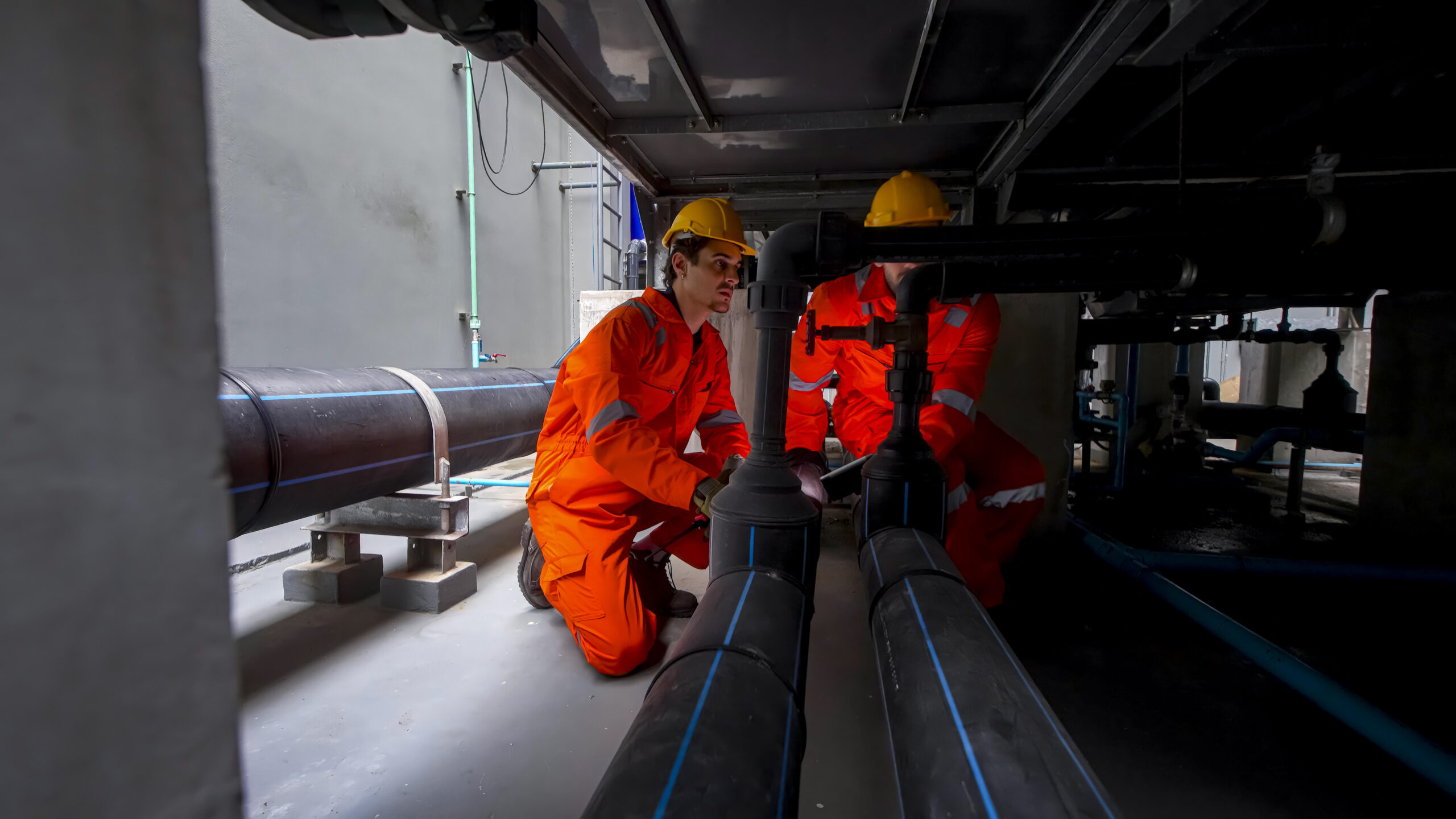When a drain backs up or a sewer line shows signs of trouble, guessing the cause only makes things worse. Homeowners and businesses need answers quickly. That is where video pipe inspections come in. By using modern plumbing camera technology, plumbers can look directly inside sewer lines and drains to see the problem with clarity.
Instead of digging up a yard or breaking through walls, a sewer line camera inspection pinpoints the issue in minutes. This saves time, reduces unnecessary costs, and provides confidence that the repair is based on facts, not assumptions.
At OnPoint Plumbing, we see how powerful this service is every day. It changes the way people think about plumbing diagnostics, and it makes stressful problems easier to solve.
How a Sewer Line Camera Inspection Works
A video pipe inspection uses a waterproof camera attached to a flexible cable. The camera feeds real-time video to a screen so the plumber can navigate through the sewer line. Every turn, blockage, or crack is visible without needing invasive work.
Here’s what typically happens during the process:
- Access Point Setup – A plumber enters the line through a cleanout or another opening.
- Camera Insertion – The cable with the camera head moves smoothly through the pipe.
- Live Feed Review – Video plays on a monitor, showing clogs, buildup, or damage.
- Accurate Sewer Diagnostics – With visual proof, the plumber explains the cause and the solution.
This makes CCTV drain inspection service one of the most reliable ways to identify sewer problems.
Why Accuracy Matters in Sewer Diagnostics
Traditional diagnostics relied on listening for sounds, guessing from symptoms, or trial-and-error digging. Those methods often wasted money. A plumbing camera inspection eliminates uncertainty.
Accurate diagnostics matter because:
- Faster repairs – No wasted hours trying methods that don’t work.
- Lower costs – Fix only what’s damaged instead of replacing whole sections.
- Clear explanations – Customers can see the video proof for themselves.
- Long-term planning – Video recordings help plan future maintenance.
Common Problems Found With Plumbing Camera Technology
Here are issues that are often revealed during a video pipe inspection:
| Problem Type | What the Camera Shows | Why It Matters |
| Tree root intrusion | Roots breaking into joints | Leads to blockages and pipe damage |
| Pipe cracks or collapses | Visible breaks or sunken spots | Requires repair or replacement |
| Grease buildup | Thick coating inside the pipe walls | Slows drainage and causes clogs |
| Foreign objects | Toys, wipes, or debris | Causes sudden blockages |
| Corrosion | Metal pipes are thinning or flaking | Can lead to leaks or collapse |
Each of these is hard to confirm without a CCTV drain inspection service. A quick look with a camera provides answers that save frustration.
Benefits Beyond the Repair
Choosing a sewer line camera inspection does more than solve today’s clogs. It gives peace of mind for tomorrow. Some advantages include:
- Preventing surprises – Regular inspections catch small issues before they grow.
- Buying or selling property – Knowing the condition of sewer lines protects investments.
- Insurance documentation – Videos serve as evidence for claims when damage occurs.
- Clear communication – Homeowners can view the video alongside the plumber.
Why OnPoint Plumbing Recommends Video Pipe Inspections
At OnPoint Plumbing, we recommend this service for any major drain concern. Customers often share how relieved they feel after seeing the problem clearly. One client had recurring backups for months. Other companies guessed at the cause. Within one hour, our video pipe inspection showed tree roots blocking the main line. The repair targeted and solved the problem permanently.
You can also view our full list of plumbing services here.
When Should You Schedule a Sewer Line Camera Inspection?
Not every clog needs a camera, but there are times when it is essential:
- Repeated slow drains or backups
- Bad odors coming from sinks or drains
- Unexplained wet spots in the yard
- Buying an older property
- After tree removal or major landscaping
Waiting only risks more damage. A quick inspection saves money and headaches in the long run.
Comparing Video Pipe Inspections to Old Methods
Before plumbing camera technology, plumbers relied on guesswork. Here’s a simple comparison:
| Method | Accuracy | Cost Efficiency | Time |
| Guesswork and digging | Low | Expensive due to extra repairs | Days |
| Mechanical augers | Medium | May miss the root cause | Hours |
| Video pipe inspections | High | Only fix what is proven | Less than an hour |
This comparison shows why modern CCTV drain inspection service is the smarter choice.
A Clear View for a Clear Decision
Plumbing problems are stressful, but guessing only adds to the pain. Video pipe inspections provide fast and accurate sewer diagnostics, so you know the exact problem and the best fix. With this service, you avoid wasted money, unnecessary digging, and endless frustration.
For homeowners and businesses, the choice is simple. When in doubt, schedule a sewer line camera inspection and see the problem for yourself.
Ready to See What’s Really Going On in Your Pipes?
Don’t wait for small clogs to turn into big problems. Schedule your video pipe inspection today with OnPoint Plumbing. Our team will give you clear answers, fast solutions, and peace of mind that your sewer system is in good hands.
FAQs
1. How long does a video pipe inspection take?
Most inspections take less than an hour, depending on pipe length and access points.
2. Is a sewer line camera inspection messy?
No. The process is clean and non-invasive since the camera enters through existing openings.
3. Can I watch the video during the inspection?
Yes. Most plumbers show the live feed so you can see what is happening inside the pipe.
4. How often should I schedule a CCTV drain inspection service?
Every 1–2 years for older homes or whenever you notice repeated drain issues.
5. Does plumbing camera technology work on all pipe types?
Yes. It works on PVC, clay, cast iron, and other common materials.

